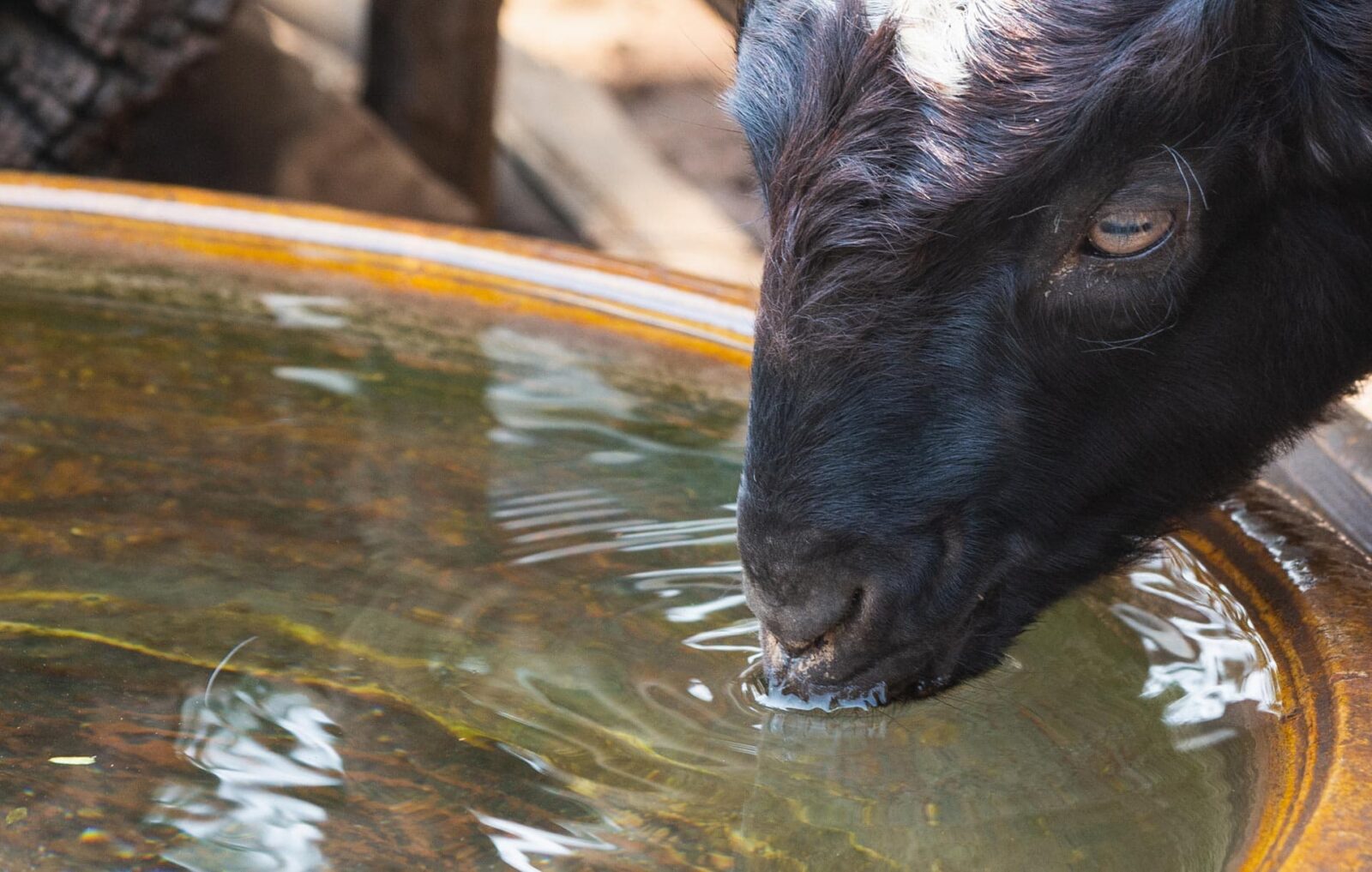The use of a chainsaw, meat goats, and termites to clear steep, untillable land for pastures is very economical, and it is environmentally friendly. We have been doing this for forty-five years at Critter Ridge.
We also use goats for brush control as goats will eat whatever is in front of them in a controlled way, meaning they’ll eat grass, brush, and any other living plant down to about an inch above their roots. You can think of them as little living lawnmowers who can “cut your grass” with almost the same precision as a mower does.

Some would argue that it is not environmentally friendly to cut trees that add organic matter to the soil, trees that remove carbon dioxide from the air and add oxygen to the air. We argue that, in northern Arkansas, pasture forages will do this better than trees. It has been observed by many that natural prairie soils are deeper and richer in organic matter than forest soils. A plant with green leaves removes carbon dioxide from the air and adds oxygen through a process called photosynthesis.
In northern Arkansas, hardwood trees do not have green leaves till late April and they lose their leaves in October. They only photosynthesize for about five months out of the year, but well-managed pasture land with both cool and warm-season forages will photosynthesize for about ten months.
Pine trees will photosynthesize the year around, but they do not grow well in northern Arkansas because of frequent ice storms which injure the trees. These ice storms also damage hardwoods keeping them from producing quality lumber.
Northern Arkansas is in a transition zone between the forested regions, east of the Mississippi, and the natural prairies, of the Great Plains. When the white man first came to this area the land was mostly prairie with trees only on the north slopes and in deep ravines. The Native Americans allowed the prairies to burn every year to kill young trees and sprouts. They did this because the prairies produced more game than the mature forests. They also produce more predators.
When trees are cleared from land with a chainsaw, the stored energy is left behind in the stumps and roots. This energy is used to produce the rapid regrowth of sprouts. These sprouts can be very high in protein and other nutrients. Goats are able to convert these nutrients into high-quality goat meat and goat milk for human consumption. When land is cleared by bulldozing, this stored energy is wasted.
In the summer we cut trees each morning so the goats can eat the tops during the day. Later, we cut them up for firewood and stack the branches that are too small for firewood. We always have plenty of firewood to heat our home, and we often have extra to sell or to give to a neighbor.
After clearing an area we plant tall fescue and white clover which are cool-season forages. These two forages are very easy to establish. They provide a quick ground cover to prevent soil erosion.
The ground is usually too steep, rocky, and full of stumps to prepare a seedbed so we just throw the seed on top of the ground. Before seeding, we burn any leaves left on the ground. We use more seed than one would use on a prepared seedbed. We sow 30 to 40 pounds of tall fescue plus 3 to 4 pounds of white clover per acre.
Fall seeding works only if weather conditions are ideal. If you do seed in fall, wait till a hard freeze kills the grasshoppers, or they will eat all of your seed. We found that early February seeding of cool-season forages works best in most years. Sometimes we will have to reseed a plot a second time if the first seeding does not take.
We graze the fescue and clover lightly until they are well established, but we do allow the goats to graze the sprouts in summer so the sprouts don’t compete with the fescue and clover.
As long as one has trees to cut and sprouts to graze one does not need to worry about warm-season forages. Goats will do better if they have some grass and legumes to graze along with the treetops and sprouts. Mature leaves on trees cut in late summer do not have a high nutritional value, but they are adequate for mature goats after the kids are weaned.
If you’re raising meat goats and you have kids, they may need an extra protein supplement which can be creep fed to them if high-quality pasture is not available. Sprouts from trees that have been cut earlier will be highly nutritious.
While sprouts are great for goats they have a short growing season (about 5 months). Sprouts will not survive more than three years in a permanent goat pasture. Some have suggested that permanent sprout pastures could be maintained for goats by rotational grazing whether fenced in or not.
The problem with this theory is that the leaves on sprouts wax over shortly after they emerge, and after waxing over they have little nutritional value. To keep sprouts highly nutritious throughout the growing season they must be grazed constantly.











Leave a Reply